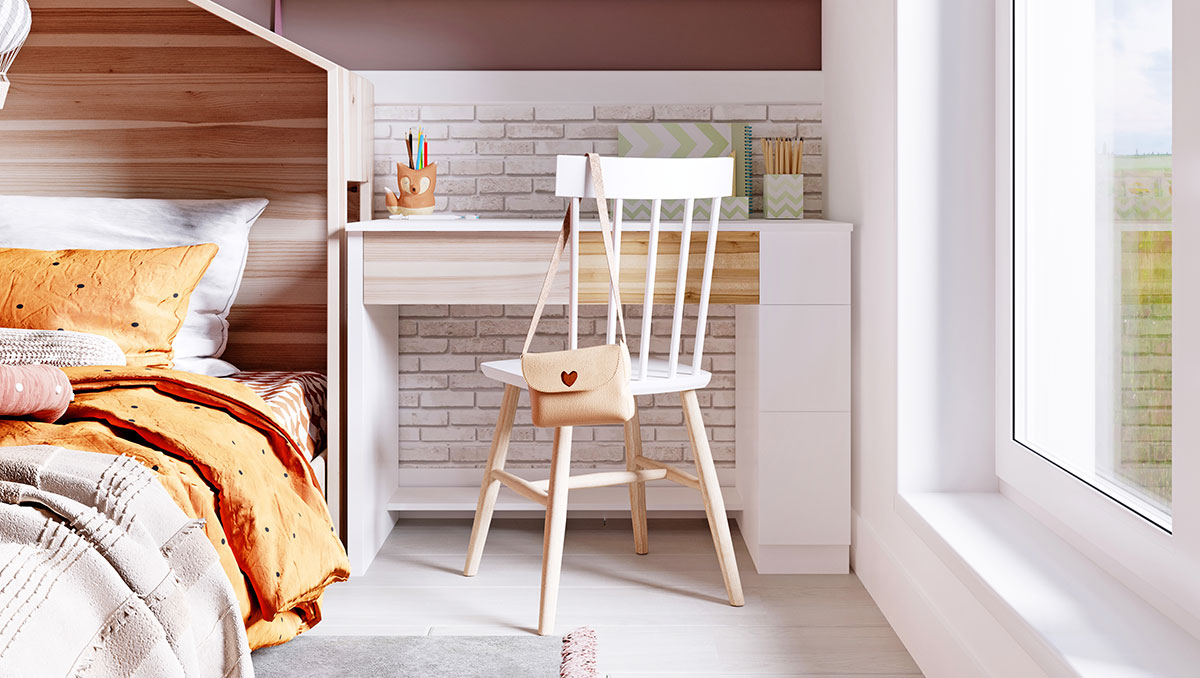
Designing a child's room is no piece of cake. The room must combine three functions: a place for play, study, and relaxation. Find out how to design a room that supports students' learning and inspires them to expand their horizons.
How to choose a desk for a child
The learning center in a child's room is, of course, the desk. If your little one is just starting their school journey, it's a good idea to choose a desk that grows with them, so you won't have to replace the furniture after just a few classes.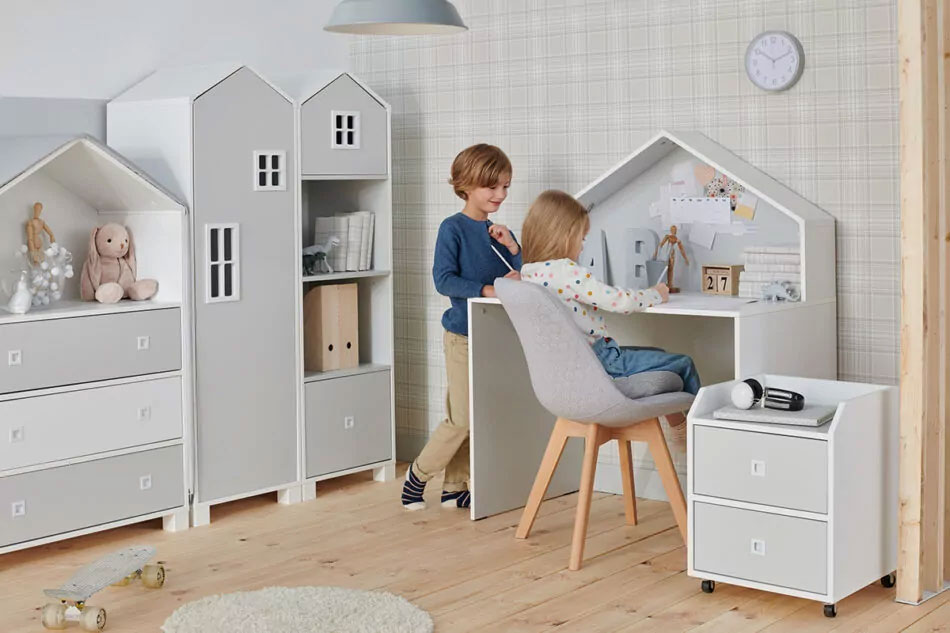
photo: Photo by Konsimo
The desk should be large enough to accommodate all necessary items. Young children don't typically use multiple textbooks at once, but large-scale art projects may require more space. Drawers, an extension, or a shelf above the desk will provide additional space for writing accessories. Avoid tightly built-in desks under the desk. Limited legroom will be very uncomfortable, especially for a busy child. If your child has trouble concentrating, try doing homework outside the child's room. An empty table in the kitchen or living room may work better. The child won't be distracted by the toys around them. In this case, we also need to ensure a calm atmosphere and turn off all distractions, such as the television.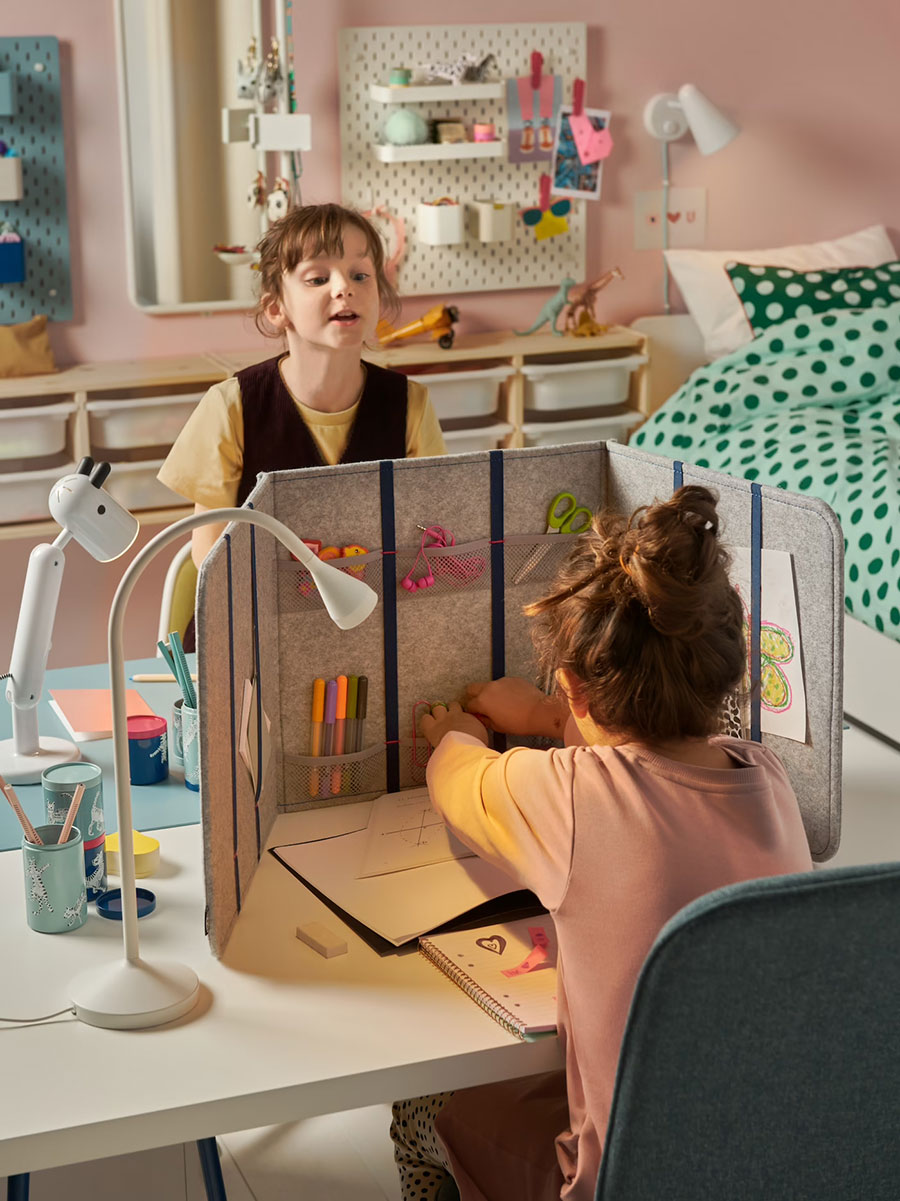
photo: Manufacturer's photo - Ikea partition screen
A shared table instead of multiple desks also works well for multiple children sharing a room. Useful accessories, such as a desk screen, are available at popular retailers like IKEA.How to organize space in a child's room
Plan a space for all school supplies near the desk, for example, a shelf in a bookcase or a drawer. Don't mix them with your child's other belongings, even if there's still room on the shelf. This will not only give school supplies their proper importance but also avoid clutter and the frantic search for missing notebooks or books.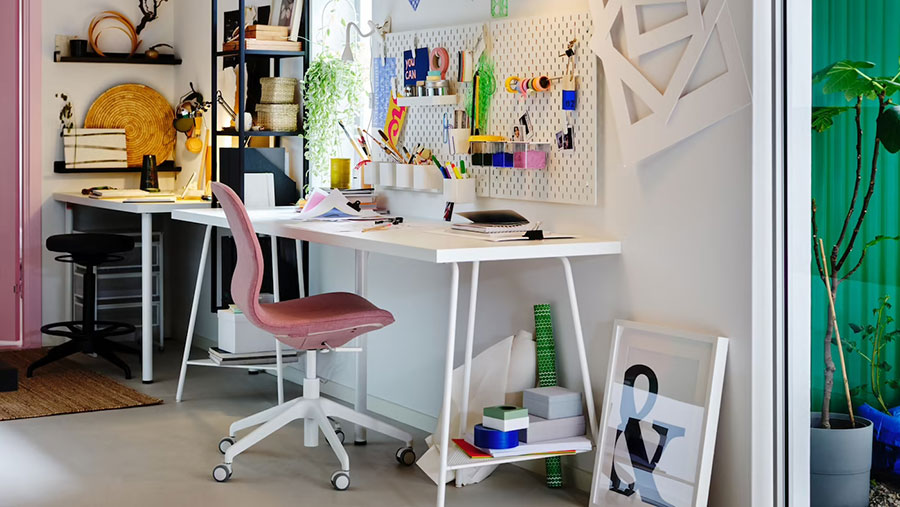
photo: Manufacturer's photo, multifunctional board - IKEA SKÅDIS
You can store school and art supplies in desk drawers or in special containers for crayons and pencils. If you have a particularly large number of art supplies, you can store them on a small shelving unit with wheels. This is a convenient and aesthetically pleasing solution, especially if your child works in different places. After school, the cart can be stored in a closet or under the desk.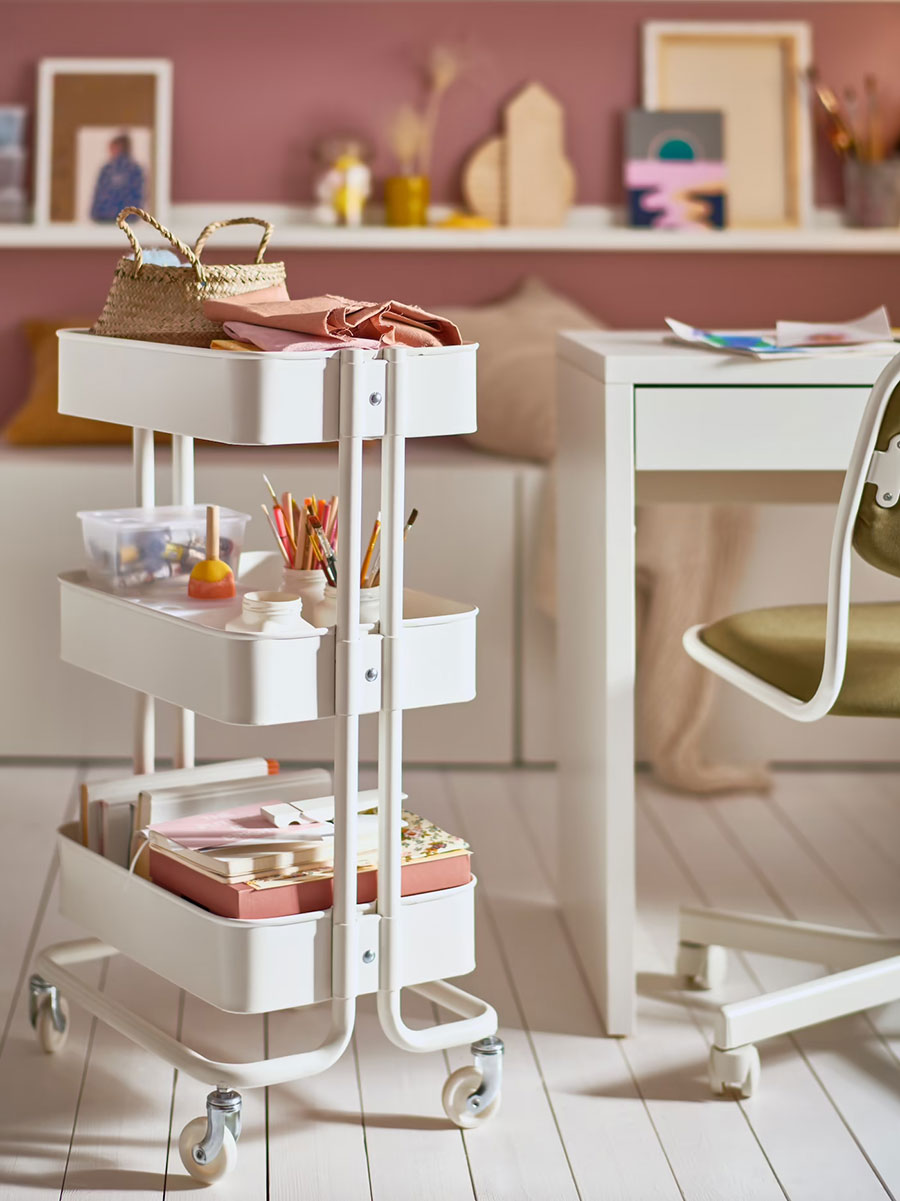
photo: Manufacturer's photo, accessory trolley - IKEA RÅSKOG
Displaying creative materials in this way will make your child more likely to reach for them than if they had to search through cabinets for paper and paints.A comfortable chair for a child
A chair is another essential piece of equipment for students' work. The most important feature of a good chair is helping the child maintain proper posture during long periods of study. Gaming chairs designed specifically for this type of work are an interesting solution. They combine many child-friendly features. They provide good support for the head, back, and arms, while a special lumbar cushion and contoured backrest ensure the spine is always in the correct position.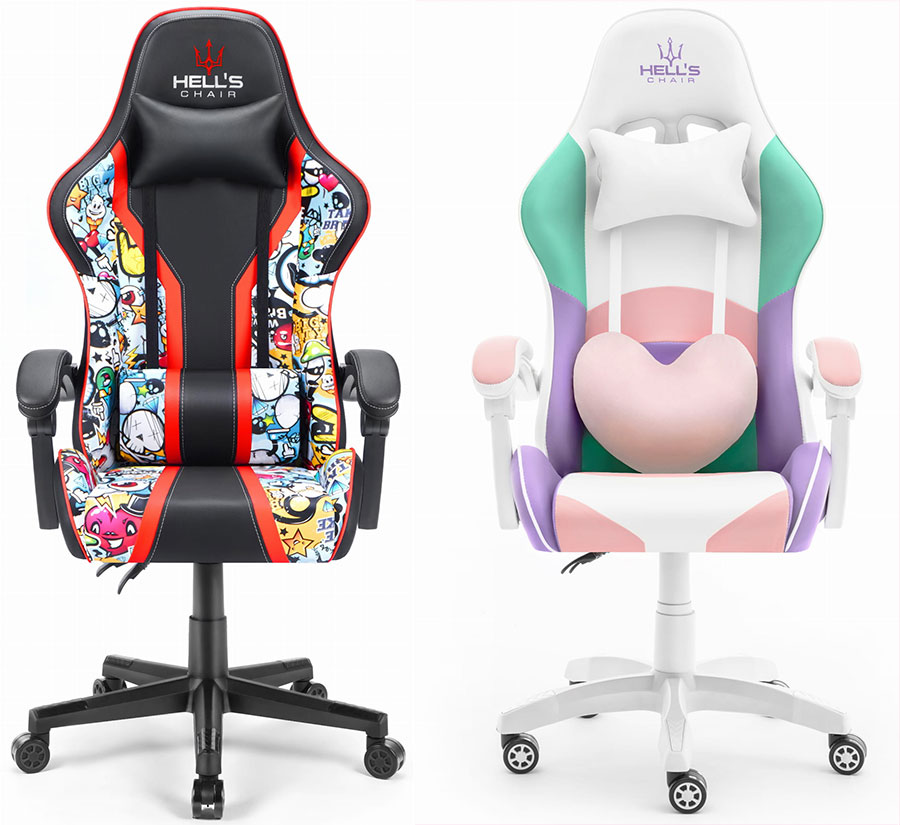
photo: Manufacturer's photo - Hells gaming chairs
This chair is not only healthy but also fashionable among schoolchildren. Children can choose from a variety of designs to best suit their room or hobby.A comfortable place to read
Reading is the foundation of every educated person. It's important to encourage children to read from an early age. To encourage children to read, we must provide a comfortable place to read and place books within easy reach.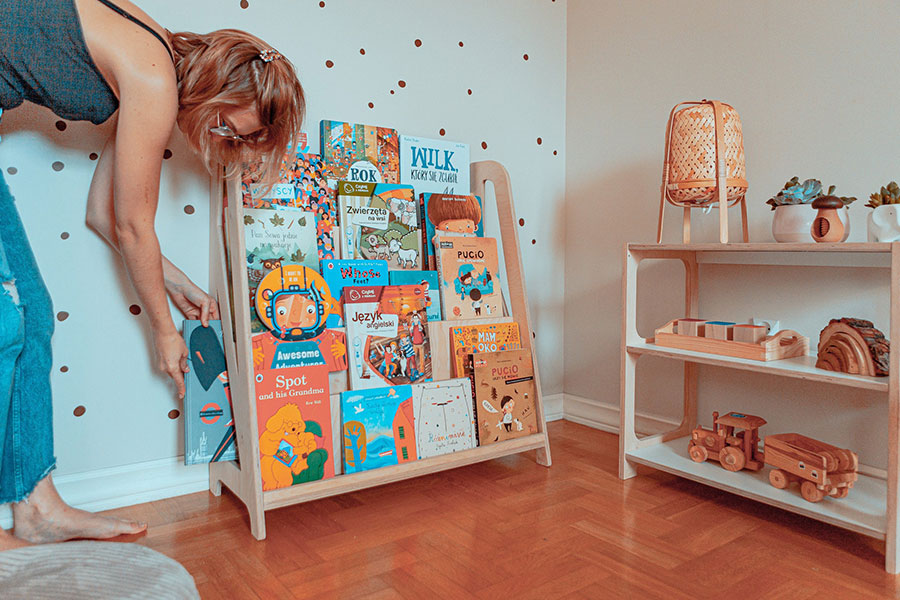
photo: Producer's photo - Hingi
Younger children will become interested in colorful books if we arrange them on special bookshelves that display the covers. Learning isn't just about textbooks. Choose books that encourage broadening your horizons in a unique way. Interesting titles will spark your child's imagination and encourage them to delve deeper into the subject.
Learning isn't just about textbooks. Choose books that encourage broadening your horizons in a unique way. Interesting titles will spark your child's imagination and encourage them to delve deeper into the subject.  If you have enough space in your room, set up a reading nook. A comfortable armchair with cushions and good lighting within reach is ideal, but a bed or fluffy rug will also work well. Don't overdo it with the number of books. A large bookcase can be overwhelming for a child, while a small shelf with a few favorites on display will encourage them to reach for them more quickly. Remember that a parent's role in fostering a love of books is crucial. Reading together will inspire your child to immerse themselves in reading.
If you have enough space in your room, set up a reading nook. A comfortable armchair with cushions and good lighting within reach is ideal, but a bed or fluffy rug will also work well. Don't overdo it with the number of books. A large bookcase can be overwhelming for a child, while a small shelf with a few favorites on display will encourage them to reach for them more quickly. Remember that a parent's role in fostering a love of books is crucial. Reading together will inspire your child to immerse themselves in reading.

Podziel się:
5 Preschooler Skills That Are Worth Honing Before Starting School
Back to school - how to turn it into an adventure, not an obligation